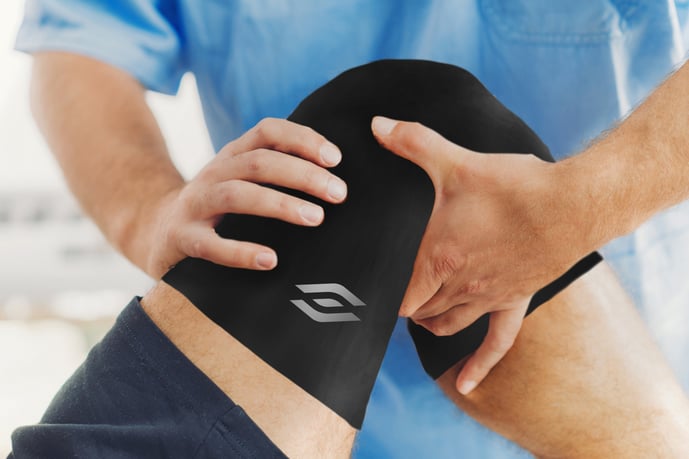Why is the Star Excursion Balance Test Important for Injury Recovery?
The Star Excursion Balance Test (SEBT) is used to assess lower body mobility, proprioception, and strength. To perform it, a series of eight lines in a star pattern is marked on a floor using pieces of tape laid across one another in an ‘X’ to make a star with eight evenly-spaced points.
To traditionally perform the Star Excursion Balance Test (SEBT), people follow these steps:
- Stand on one foot in the middle of the star.
- Without resting your free foot on the ground, reach out and touch each point of the star at the furthest point you can reach.
- Do this one point at a time while returning your foot to the center each time before reaching out as far as you can to tap the ground on the next point on the star.
This test measures balance, mobility, and motor control, which is important for sports performance and resilience. Critically, SEBT also measures side-to-side asymmetries. If an athlete can stay balanced while reaching with a much greater range of motion on one side than the other, they’re at a significantly increased risk of injury.
Tracking movement asymmetries in the lower body by using the SEBT is a reliable and valuable way to identify athletes with a high risk of a lower-body injury. It's also a helpful method to measure progress during a rehab program.
The Problem with SEBT
An athlete recovering from a lower-body injury will generally have less reach while standing on their injured limb. By tracking the changes in this deficit and comparing them to a more symmetrical, non-injured baseline, trainers and therapists are able to use objective progress indicators during their athlete’s return-to-play process. They can track meaningful data that allows them to know when an athlete is sufficiently recovered and functionally ready to get back into the game.
Many studies have highlighted the validity of the star excursion balance test in screening athletes for participation in sports, as well as measuring functional symmetry during dynamic movements. However, a drawback to the SEBT is that the therapist or trainer must keep track of a lot of data — and by hand. Each round of tests involves measuring and recording the reach-and-touch distance for each eight points on the star. In the standard protocol, the test is repeated three times per leg and then the scores are averaged and compared.
This works out to 48 different numbers that have to be recorded and processed. For a busy trainer, this is a lot of data management and an inefficient use of time. The more time spent on processing data, the less time is allowed for direct patient treatment.

The Cipher Skin Knee BioSleeve
The Cipher Skin BioSleeve can automate the entire SEBT process, reducing time and improving accuracy. Rather than a trainer scrambling around on the ground on taking measurements of each distance 48 times, the BioSleeve auto-detects and records the reach distance for each touch on the star. This data is automatically collected, processed, and stored on the Digital Mirror®.
This is a game-changer. Physical therapists and athletic trainers no longer have to plug numbers into a spreadsheet or track countless pieces of paper or software files. Instead, they simply use the Cipher Skin Digital Mirror to instantly see their patients' or athletes' data as the test is performed in real-time. Data is captured with the highest degree of accuracy and is stored so progress and asymmetries can be easily tracked over time.
By automating the data capture and analysis process of the Star Excursion Balance Test, Cipher Skin enables the trainer to utilize this test more efficiently with more accurate data and less wasted time. Trainers and physical therapists can now focus more on what matters – rehab and return-to-play progress, injury risk, and performance data.

